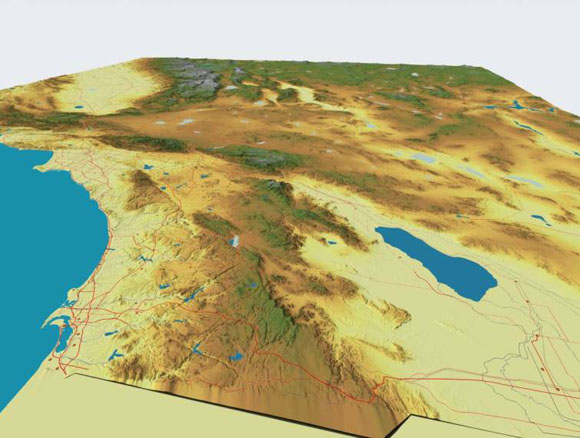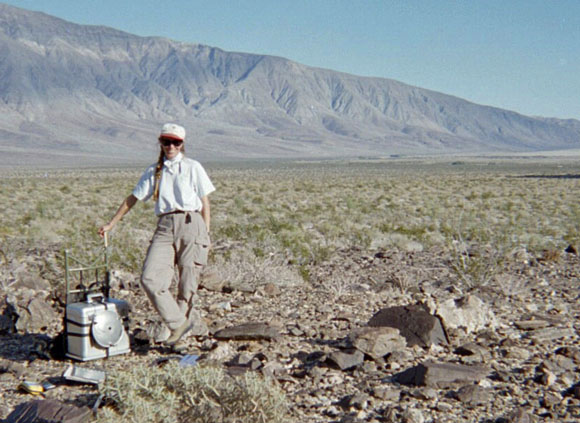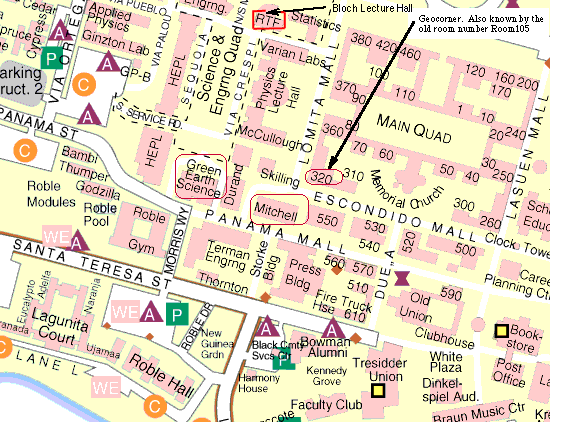
Presents
Location: Stanford University
This will be the 416th meeting since 1954

Gravity and magnetic data illustrate the complexity of deformation when a strike-slip fault changes its orientation. The San Gorgonio Pass is a relatively narrow restraining bend at the eastern end of the Big Bend of the San Andreas fault, stepping 15 km to the left over a lateral distance of 20 km. Geologic studies have shown that the active trace of the San Andreas fault has migrated in time and space during the past 5 million years in this area. One of these older strands is the Banning Fault. In San Gorgonio Pass the neotectonic strands of the San Andreas fault do not appear to be continuous. Furthermore, seismicity studies disagree on the continuity of the San Andreas Fault in this area.
Gravity and magnetic data define intertonguing thrust wedges that form the upper crust in San Gorgonio Pass region. Interpretation of gravity data indicates that sedimentary rocks have been thrust at least 5 km in the central part of San Gorgonio Pass beneath basement rocks of the southeast San Bernardino Mountains. Subtle, long-wavelength magnetic anomalies indicate that magnetic rocks extend in the subsurface across the San Gorgonio Pass region, south under Peninsular Ranges basement. These deep magnetic rocks are composed either of upper-plate rocks of San Gabriel Mountains basement or rocks of San Bernardino Mountains or both. These rocks are out of place; a likely scenario to place these rocks beneath San Gorgonio Pass posits that transpression caused by space problems within the restraining bend in San Gorgonio Pass drove a wedge of Peninsular Ranges basement and its overlying sedimentary cover northward into the San Bernardino Mountains during the Neogene, offsetting the Banning Fault at shallow depth. Average rates of convergence implied by this offset are broadly consistent with estimates of convergence from other geologic and geodetic studies. Rates of uplift implied by this offset are almost an order of magnitude greater than those obtained from thermochronometric studies in the area, but this discrepancy may highlight the role of isostatic subsidence in this area. This interpretation suggests that faults mapped at the surface evolved not only in map but also cross sectional view. Given this multi-layered nature of deformation, it seems unlikely that the San Andreas Fault will rupture cleanly through the complex structures in San Gorgonio Pass.


Vicki Langenheim
Vicki Langenheim is a research geophysicist with the U.S. Geological Survey in Menlo Park, Calif., specializing in the application of gravity and magnetic methods to assessment of seismic hazards and groundwater resources throughout the western U.S., particularly focused on investigations of the San Andreas Fault system and extensional basins in the Basin and Range. She has also delineated buried structures and faults in the Mississippi Embayment and Antarctica. She received a bachelor of science degree in geophysics from Stanford University and a master's degree from University of California, Berkeley.
Reservations: The preferred way to make reservations is simply to email John Spritzer at jspritzer@usgs.gov by May 28, tell him you will attend, commit to pay, and bring your payment to the meeting. John always emails a confirmation; if you don’t get one, assume email crashed yet again and email him a second time. A check made to “PGS” is preferred, payable at the meeting.
If you want to pay in advance:
Everyone (including Stanford folks now) Please make dinner reservations by May 28. Contact John Spritzer, at U.S. Geological Survey, 345 Middlefield Road, MS-973 Menlo Park, CA 94025, Tel.: (650) 329-4833. Send check made out to “PGS” to John.
Dinner is $35.00. Includes wine (5:30 to 6:15 PM.) and dinner (6:15-7:30 PM.).
For students from all universities and colleges, the dinner, including the social 3/4-hour, is $8.00 and is partially subsidized thanks to the School of Earth Sciences, Stanford University (Note, no-show reservations owe the full price).
Doris, whose wonderful crew prepares our meals, asked that we let you know that people who are late RSVPing and people who show up without a reservation will be welcome but that they will be eating on paper plates with plastic utensils (food supply permitting).
Dues for Academic Year 2009-2010 ($10.00) should be sent to John Spritzer, U.S. Geological Survey, 345 Middlefield Road, MS-973 _Menlo Park, CA 94025. John’s phone: (650) 329-4833.
Officers: Vicki Langenheim, President; Jon Hagstrum, Vice President; Mike Diggles, Secretary; John Spritzer, Treasurer; Elizabeth Miller, PGS Stanford University Coordinator

Date created: May 16, 2010
Last modified: May 23, 2010
Created by: Mike Diggles, Webmaster-Secretary, PGS.